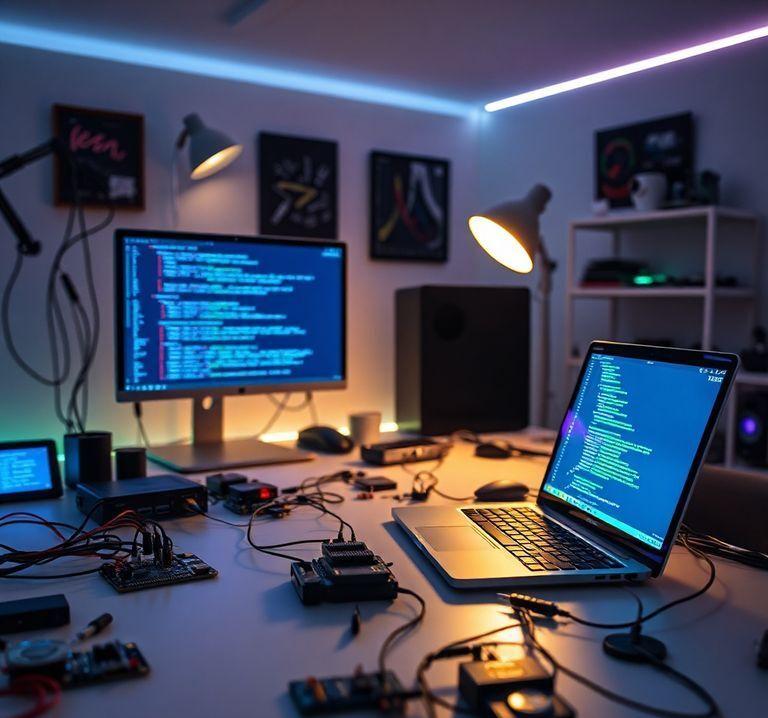Introduction to ESP32 Programming with MicroPython
10.12.2024 - Engine: Gemini

Introduction to ESP32 Programming with MicroPython
Introduction
The ESP32 is a popular microcontroller module known for its performance, connectivity, and affordability. MicroPython is an implementation of the Python programming language for microcontrollers, making it easy and intuitive to program the ESP32. In this blog post, we will introduce you to the basics of programming the ESP32 with MicroPython.
Installing the Required Software
To get started with ESP32 programming using MicroPython, you will need the following software:
- Thonny (Python IDE): https://thonny.org/
- MicroPython firmware for ESP32: https://micropython.org/download#esp32
Getting Started
- Connect your hardware: Connect your ESP32 module to your computer using a USB cable.
- Flash the firmware: Open Thonny and go to "Tools" > "Device Manager". Select your ESP32 and click on "Install/Update Firmware".
- Configure the IDE: Go to "Tools" > "Options" and set the "REPL port" to the COM port of your ESP32.
- Start the REPL: Click on "REPL" in the top toolbar to open the Python console.
Simple Projects
Now that your environment is set up, you can start programming. Here are a few simple projects to get you started:
Blinking an LED:
import machine
# Set a pin as an output
led = machine.Pin(2, machine.Pin.OUT)
# Blink the LED in a loop
while True:
led.value(1) # Turn on the LED
time.sleep(1) # Wait for 1 second
led.value(0) # Turn off the LED
time.sleep(1)Reading a button:
import machine
# Set a pin as an input
button = machine.Pin(0, machine.Pin.IN)
# Monitor the button in a loop
while True:
if button.value() == 1: # If the button is pressed
print("Button pressed")Printing text to the serial monitor:
import time
# Set up the serial monitor
print("Hello World")
# Wait for 5 seconds to receive the message
time.sleep(5)Conclusion
Programming the ESP32 with MicroPython is an easy and fun way to get started with the world of microcontrollers. In this blog post, we covered the basics of installing the software, getting started, and a few simple projects. With a bit of practice, you can unleash the power of this versatile device to create your own innovative projects.

